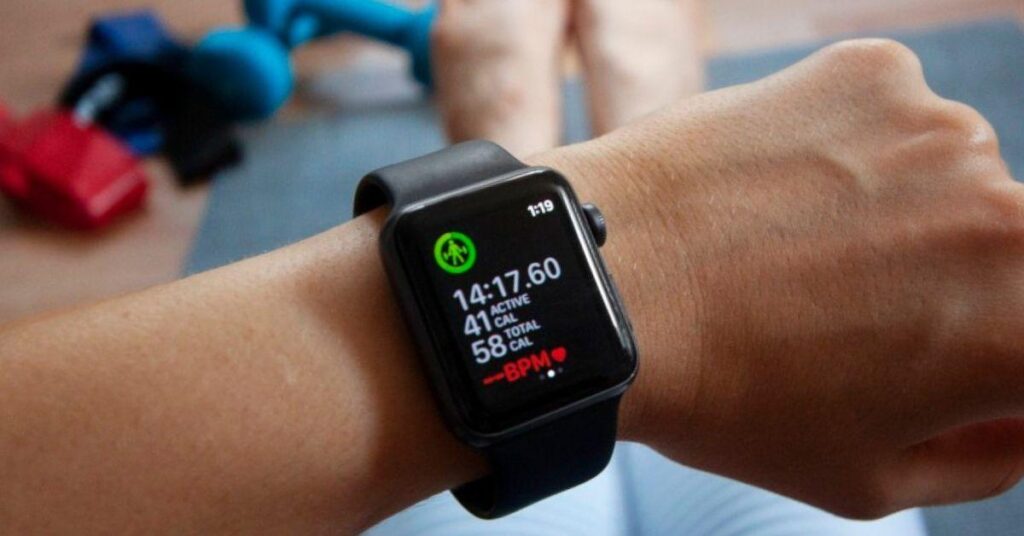Working out at home is undeniably growing in popularity and taking hold in the fitness world. One of the main reasons behind this is technology. According to the CDC’s National Center for Health Statistics, only 22.9% of adults in the U.S are meeting the recommended guidelines for physical activity every week. At-home workouts present a massive opportunity to tackle physical inactivity and the health risks that come with it.
The Benefits of At Home Workouts
In between a busy schedule, long commute, and bad weather, home workouts have a ton of benefits. With everything from expert-led total-body workout apps to live-streamed fitness classes, working out at home is more creative and exciting than ever.
Working out at home can save both time and money. You can fit your workout routine entirely around your schedule, making it very convenient. Quick home workouts enable you to get involved with high-intensity interval training, dance workouts, and a vast range of exercises, all from the comfort of your own home. Keeping your exercise routine at home means no commute, and a level of privacy that you can’t always get at a gym or in a class. If for whatever reason, you can’t go to the gym, whether it’s time or money, there’s never an excuse not to exercise. One of the downsides of working out at home is the lack of professional guidance, and this is where technology is changing at home workouts. With digital platforms, smart tech, and clothing, tech provides expert fitness instruction and has transformed the at-home workout.
3 Examples of Smart At Home Fitness Tech
The home fitness market is full of all sorts of tech and gadgets that aim to make your workout as useful as possible. You can keep track of important stats like your heart rate or weight and work to improve your form and fitness from home.
Tangram Smart Rope
Jump roping is an easy and effective exercise to add to your regime. This smart rope takes it to the next level. It tracks your jump count, total workout time, and calories burned. It has enough memory to collect up to 100 sessions and also has some gamification options where you can unlock certain rewards as you work out.
iHealth Core Smart Scale
The iHealth Core is more than just a weighing scale. It’s an entire body composition scale that gets you as close as possible to your accurate body results without a DEXA scan. It can store up to 200 recent scans of your body composition, including BMI, body fat, muscle mass, and more. The scale syncs to your phone where you can keep track of all your data.
Bowflex Selecttech 560 Dumbbells
Dumbbells are a common sight in a home-gym, but these smart ones help you track your progress during strength training sessions. This tech can track and record your sets, reps as well as how much weight you’re lifting. You can connect the smart tech to your smartphone via Bluetooth, where it can sync automatically. The weight of the dumbbells ranges from 10 to 60 pounds.
Technology is revolutionizing at-home workouts with expert personal trainers and advice available straight from your phone. Home workouts are a popular option for those who don’t like hitting the gym or just don’t have the time. Tech is helping you to exercise smarter and stay motivated around a schedule that works for you. In this article, we will discuss how technology is changing the way you work out at home.
9 Ways Technology Has Transformed Your At Home Workout
Technology has become an integral part of numerous industries, and fitness is no different. Just like other areas, it’s had a significant impact on health and fitness. Innovations are shifting the fitness landscape and the way you work out at an individual level.
24/7 Tracking With Wearables
The sales revenue from fitness tracker devices hit $2.57 billion in 2018 with major players in the market being Fitbit, Garmin, Xiaomi, and Apple. Approximately a quarter of U.S adults, 56.7 million, will use a wearable device at least once a month in 2019. With wearables, tracking fitness has entered a new era where data has no limits.
With simple and easy to use gadgets, you can track the metrics you need to stay on top of your fitness progress. These kinds of devices are helping users to monitor their fitness and evaluate their performance, taking out the need for regular gym visits. Wearable technology largely focuses on tracking daily activity, encouraging regular movement.
Virtual Personal Trainers
Developments in technology now mean you can have a virtual personal trainer in your living room. You no longer have to hit the gym to get expert advice. This added element of proper instruction is one of the driving forces behind the transformation of the at-home workout. The health and fitness software industry is fast gaining in popularity, changing the attitudes and behaviors of consumers. Health and fitness services are becoming much more affordable and easily accessible.
With virtual person trainers, you can train with an expert at a fraction of the cost or no cost at all. One app using virtual personal trainers is Sworkit. The app creates a workout plan to fit around your schedule. You even have the option to speak to a trainer for general guidance.
FitMo is another brand that’s taking advantage of virtual personal trainers. It lets you optimize your workout plan for a specific health goal. You can choose your personal trainer, a real-life person. You have the option to talk, video chat, and message with your personal trainer for advice. The app also offers meal suggestions. FitMo comes with more of a hefty price tag in comparison to other virtual personal trainer options, starting at $45 per month going up to $150 depending on your level of support.
Live Streaming Workout Classes
Live streaming classes on demand means you can bring virtual coaching into your home. This also gives solo exercisers the chance to join group fitness classes. Services like Peloton and ClassPass Live have made it possible to join live classes from your home as well as access workout classes on demand. This is just another aspect of the fitness industry that has been revolutionized by technology.
The drive behind live-streaming classes primarily comes down to cost. Boutique workouts like SoulCylce and CrossFit have become cult workouts but, are hitting price ranges that make it less attractive to a particular audience. With lower monthly costs, you can get a slice of the CrossFit pie that fits into a variety of budgets.
The Top 10 Barriers
Slowing Your Fitness
Business Growth
Discover more Time, location, and convenience are other factors that are leading the popularity rise. The classes have unlimited capacity, and tickets will never sell out. At an individual level, fitness-tech could help increase the number of people engaging in regular physical activity. Although a more budget option which you can fit it around your schedule, you do miss out on the vibe and atmosphere of being in an in-person group fitness class.
Live streaming classes have their place in the home workout scene, but group fitness classes still have their benefits in-person. Whether it’s live streaming or in-person, group training is a growing trend in the fitness industry. By offering group training at your gym, you can help to build a community, increase gym membership retention and motivation, and provide accountability and support.
Fitness Podcasts
There are now more than 700,000 active podcasts, and ‘health’ is one of the top five categories of podcasts. There is a massive range of health and fitness podcasts, covering everything from food and nutrition to fitness and weight loss. With advice from leading industry professionals to break-down the latest news in wellness and exercise trends – there is a show for everyone. Much like home workouts, the best thing about podcasts is that you can listen when it’s convenient for you. Check out this list of 20 best fitness podcasts for a dose of inspiration and motivation.
Smart High Tech Equipment
With the growth of high-tech equipment that’s studio-quality, the at-home gym has a new lease of life. When so much technology is packed into one piece of equipment, it can offer feedback, keep track of your progress, and give you a gym of the future. The digital weights brand Tonal is an entire gym and personal trainer on your wall. It’s a whole weight room in one with live coaching and expert-led videos for a full-body workout. Tonal is an intelligent fitness system that monitors every part of your work and keeps track of it all.
Spin studios like Flywheel and Peloton are also at the forefront of home fitness equipment with their in-home spin bikes. They offer a range of classes with live streaming options to join classes. With Peloton, you can live stream a class from the New York studio and get motivated by an instructor without leaving your house. Peloton has also expanded into treadmills, offering a similar at-home experience with the treadmill where you can connect to several live and on-demand classes.
Another brand upgrading the home gym is FightCamp. They bring a studio boxing gym into your home with at-home boxing equipment and professional guidance. The monthly subscription comes with trackers that go under your wraps to monitor your form and track every punch in real-time with metrics on-screen.
Virtual Reality Fitness
Nothing screams the future of fitness more than virtual reality fitness. Although still in its infancy, VR is making its move towards a more general fitness audience. VR games like Box VR are a great way to get your sweat on. An Oculus Rift and Windows Mixed Reality game, it’s ideal for conditioning arms, shoulders, and chest while fitting in your cardio workout. Virtual reality and immersive fitness is one way to shake up your fitness and could have a massive potential to change at-home workouts.
Gyms have already started to take advantage of VR fitness and incorporate it into their facilities. With the likes of VirZOOM and the Icaros flying machine. The VirZoom is a blend of stationary bikes and VR games while the flying machine is a core and upper body-focused VR. With the introduction of entire VR gyms like Black Box VR, the world’s first virtual reality gym, VR fitness has the power to take many parts of the fitness industry by storm.
Fitness Apps
The app store is full of various health and fitness apps that track, count, and motivate you to get moving. The global fitness app market is predicted to reach over $14.7 billion by 2026. An increase in healthy living, lifestyle changes, and a growing concern about obesity are some of the main drivers behind the market industry surge.
Whether you’re after a weight loss plan or want to build muscle, there’s an app for it. Personal training used to be a premium service, and it still is. But with the introduction of fitness apps, you can access these kinds of services digitally. Apps are promising to pump up your heart rate and get you results for a much lower price.
Workout routines can differ massively depending on what you like to do from bodyweight exercises to yoga or HIIT. There’s no doubt that going for a run in the fresh air or heading to a group fitness class gets you motivated. But there are some days where it’s a struggle to exercise, and fitness apps are a perfect alternative.
Personalized smart technology and expert trainers mean working out at home can still help you meet your fitness goals. This is especially important on the days when you don’t want to leave the house. Some of the most popular workout apps are:
- Map My Fitness
- Strava
- Myfitnesspal
- Fitbit Coach
Smart Fabrics and Clothing
Smart clothing is still to become mainstream as more and more companies play around with the concept of connected clothing. The global smart fitness wear market is expected to grow over 30% CAGR from 2016 to 2023 and hit $4.5 billion by 2023. Smart fabrics and clothing can completely track your heart rate and even monitor your emotions without the need to pick up your smartphone.
One company using smart clothing is Sydney-based startup Wearable X. The brand’s Nadi X yoga pants come with built-in haptic vibrations that pulse at specific parts of the body to encourage you to either hold positions or move. It also syncs up to your phone and gives additional feedback throughout a yoga session. Check out the 20 Minute Fitness Podcast which discusses the latest science and technology news in fitness to keep up-to-date on the latest trends.
Fitness Gamification
With VR fitness and workout apps, fitness gamification is visible throughout health and fitness software. The new age of gamified fitness takes a boring workout and makes it fun by allowing you to compete with your friends. One app that does this to walking and running is Run an Empire. The strategy augmented reality game challenges users to compete against each other to claim land. It works in a similar style to Pokemon Go, but for runners.
Whether it’s an immersive game, or allows players to win trophies and compete with friends; fitness gamification helps to motivate solo exercisers. Other examples of fitness gamification apps include:
- Zombies, Run!
- Superhero Workout
- Nike + Running Club
In Summary
As technology continues to advance, innovations will shift the fitness landscape down to the individual level. With the introduction of fitness apps, high-spec smart technology, the home gym has been transformed. By tracking your fitness journey through wearables and tech, you can receive expert guidance from the comfort of your home and keep reaching your fitness goals without the need to hit the gym every day.
Table of contents















